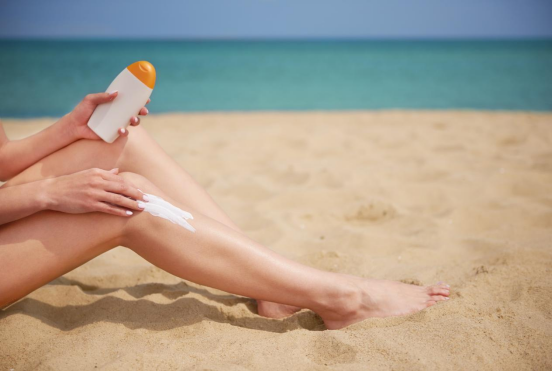
As consumers come to be increasingly smart concerning skincare, the argument in between chemical and physical sun blocks continues to be a hot topic. While both deal essential protection against the sun's unsafe ultraviolet (UV) rays, physical sunscreens are commonly admired for their mild yet reliable formulation, making them a favored choice for those with delicate or responsive skin. The key to their success lies in their active ingredients, which produce a physical obstacle on the skin to shut out UV radiation. This write-up will certainly look into the globe of physical sunscreens, focusing on their essential components: zinc oxide and titanium dioxide.
Unlike their chemical equivalents, which absorb UV radiation and convert it right into heat, physical sun blocks work by sitting on top of the skin to create a shield that disperses and spreads both UVA and UVB rays. This device is why they are usually described as "sunscreens." The main advantage of this technique is its prompt effectiveness upon application and the lower likelihood of triggering skin inflammation, as the active ingredients are not soaked up into the skin.
The most renowned active ingredient in the physical sun block family is Zinc Oxide. This giant mineral is unique in its capability to offer broad-spectrum protection, implying it efficiently protects the skin against the full spectrum of UVA and UVB rays. UVA rays are in charge of early aging, consisting of wrinkles and fine lines, while UVB rays are the main root cause of sunburn. By using thorough protection against both, zinc oxide plays a vital duty in avoiding sun damages and reducing the danger of skin cancer cells.
Moreover, zinc oxide is renowned for its soothing buildings. It has been made use of for centuries to deal with minor skin irritations, breakouts, and burns, a testimony to its mild nature. This makes sun blocks developed with zinc oxide an optimal selection for individuals with sensitive skin, acne-prone skin, or problems like rosacea and dermatitis. Its non-comedogenic residential or commercial properties likewise imply it is less likely to obstruct pores, a typical problem for those with oily or mix skin.
The various other key player in the physical sunscreen category is Titanium Dioxide. This naturally taking place mineral is an additional exceptional component for creating a physical obstacle versus UV rays. It is very effective at mirroring and spreading UVB radiation, giving robust defense against sunburn. While it uses excellent protection across the UVB spectrum, it is normally thought about much less effective against long-wave UVA rays contrasted to zinc oxide.
Because of this, titanium dioxide is usually used combined with zinc oxide in sunscreen solutions. This mix creates a synergistic impact, boosting the total broad-spectrum protection of the product. By leveraging the staminas of both active ingredients, formulators can create a sunscreen that uses thorough and dependable defense versus the sunlight's destructive rays. Like zinc oxide, titanium dioxide is also gentle on the skin and is an appropriate choice for those with delicate or conveniently aggravated skin.
In the last few years, improvements in formulation technology have attended to among the first downsides of physical sun blocks: the thick, physical sunscreen ingredients white actors they would certainly usually leave on the skin. Modern solutions currently make use of pulverized or nano-sized fragments of zinc oxide and titanium dioxide, which permits an extra cosmetically elegant application without compromising their safety capacities. This suggests you can enjoy the mild, reliable defense of a physical sun block without the tell-tale white residue.
In conclusion, physical sunscreens offer a reliable and gentle means to shield your skin from the sunlight. Their star ingredients, zinc oxide and titanium dioxide, work in consistency to develop a physical guard that deflects hazardous UVA and UVB rays. With their outstanding safety account and viability for all skin types, especially delicate skin, physical sun blocks are a powerful force in the fight versus sunlight damage. The following time you are Search the sunscreen aisle, consider the effective, safety, and skin-loving benefits of a physical solution.